Ed. note: This article is periodically updated to reflect the current price of most valuable coins.
In Coleccionistas de Monedas, we fight against the misinformation surrounding the world of coins on the Internet. For this reason, our articles are entirely written by people, not AI or other automated systems. Additionally, we link to all sources and references for coin prices, with the goal of providing you with real, updated, and reliable information.
How do we verify coin prices and values?
At Coleccionistas de Monedas, we are committed to providing accurate, trustworthy, and well-sourced numismatic information. We understand that articles about coin values can influence important financial decisions, which is why we apply a clear and rigorous methodology to estimate prices.
Sources used
- PCGS Price Guide: The official pricing guide from the Professional Coin Grading Service.
- NGC Price Guide: Updated valuation system from the Numismatic Guaranty Company.
- Heritage Auctions: Database of real auction sale prices.
- Red Book: Printed guidebook with historical pricing by grade.
- eBay Sold Listings: Only completed sales are considered, not asking prices.
Validation process
- Price review by condition grade using standard scales (MS, AU, XF, VF).
- Verification of varieties and errors through multiple data sources.
- Expert consultation when prices significantly deviate from the norm.
- Regular updates to reflect current market trends.
Important disclaimer
The values presented in this article are for reference purposes only. Final coin prices can vary significantly depending on authenticity, grade, and selling context. We strongly recommend having your coin certified by a professional service such as PCGS or NGC before selling or purchasing it as an investment.
Would you like to know which valuable pennies are considered important U.S. coins with value? Here’s a penny for our thoughts.
Key Takeaways
- Evaluate the amount of wear of your Lincoln Wheat penny is usually the key aspect to determine the coin’s market value. In some particular cases rarities or errors may raise the price. Uncirculated condition examples of steel or bronze pennies are avidly sought by coin collector of United States coinage.
- Selling your rare coin by their melt value should always be the last option. A better idea would be to find out all the information about your coin so you can determine the real and updated value.
- In some cases the price trend is clearly upward, so it can be a very good investment if you want to sell it after a few years.
Rare and Valuable Penny values chart (2025 Update)
What pennies are worth money? It’s curious that precisely one of the most humble currencies in the United States can reach such extraordinary prices. Here is our pennies worth money list based on recent auction records.
| Lincoln Wheat and Indian Penny values chart 2025 | ||
| Year | Variety | Auction Record Value |
|---|---|---|
| 1944 | Steel Wheat | $180,000 |
| 1943 | Copper Wheat | $86,000 |
| 1873 | Indian Head | $10,000 |
| 1914 | D Wheat | $5,500 |
| 1877 | Indian Head | $3,200 |
| 1926 | Wheat | $3,000 |
Made in the United States since 1856, these old pennies worth money coins can give more than a few surprises as far as their value is concerned.
- What year pennies are worth money
- What pennies are worth money in 2025
- Update list & Lincoln Penny value chart in 2025
JUMP TO SECTION
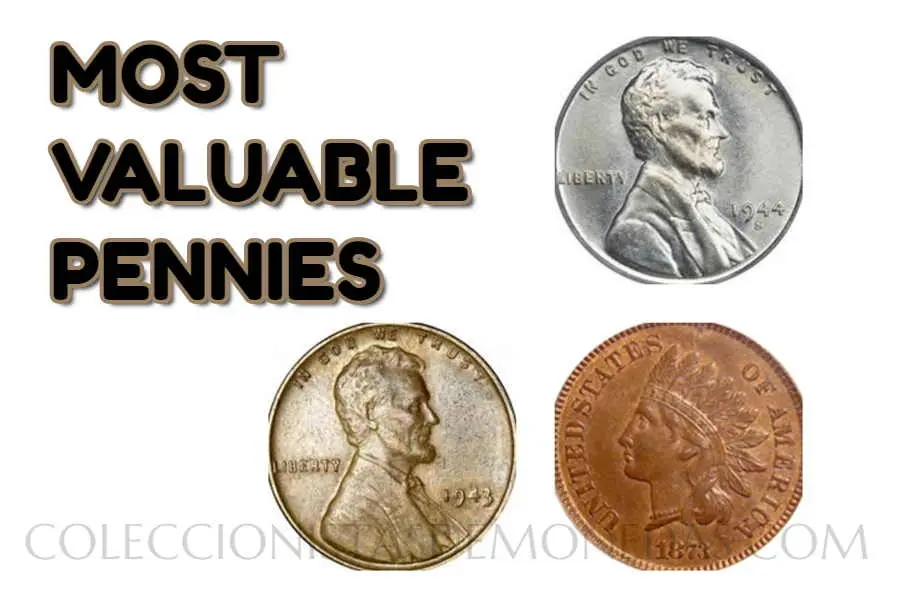
Pennies worth money Chart
Are wheat pennies worth anything? The answer is most definitely – yes! Its value does not correspond to their size at all… keep reading to know more. It is truly amazing! Want to know what year of pennies are worth money or just what penny variety to look for? Some of these cents can become extremely valuable for coin collectors, like the first place on our list that reaches $100,000!
1. 1944 Steel Cents
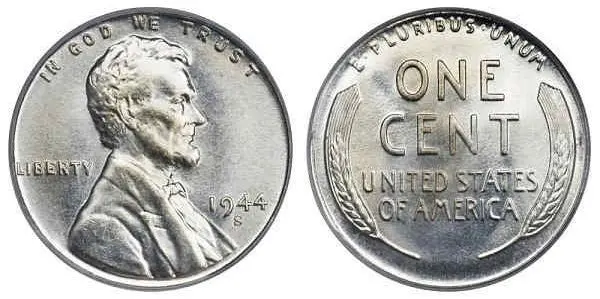
This rare coin stands out among the Lincoln cents worth a lot of money. Pennies minted in zinc-coated steel planchets in 1944 are pretty scarce and, of course, highly valued by coin collectors. Experts claim that plates of this metal were slipped in during the minting by mistake.
These steel coins can be sold to an any American coin collection for values ranging between $77,000 – $180,000. In January 2021, a 1944 Lincoln Cent Steel MS specimen was sold by Heritage Auctions for $180,000.
- 1944 wheat penny chart – Updated 2025 Prices
-
Know more about most valuable wheat cents? Click Wheat pennies worth money – 2021 Update
2. 1943 Lincoln Copper Wheat Pennies
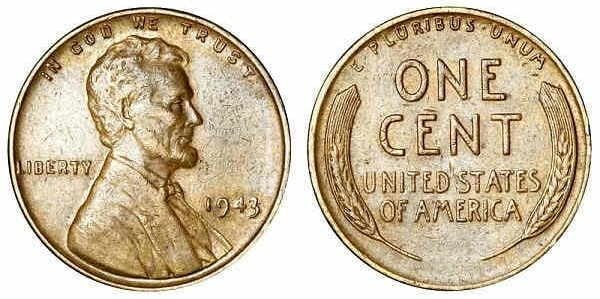
With an average value of $60,000, these pieces can reach $86,000 in numismatic auctions. As with the steel ones, they are thought to have been minted by mistake.
Given the price of these 1943 Lincoln wheat pennies with copper, many counterfeits are in circulation. Although many of them are actually from 1948, the ‘3’ has been modified to look like an ‘8’. In this case, if you test the magnet and it sticks to it, you know it is a fake. In fact, almost all of them were made of steel. However, due to the minting error or perhaps forgetfulness of some copper plates, during this year these copper Lincoln pennies made that are so expensive today were minted.
By the way, experts believe that there are still many yet to be discovered!
3. 1873 Indian Head Penny
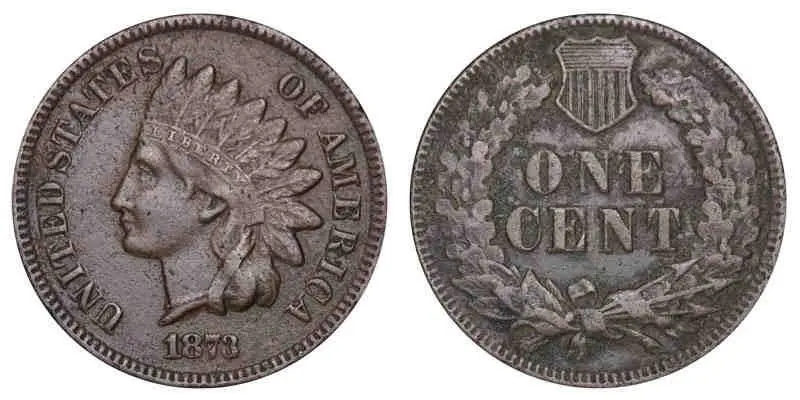
Among the most valuable in United States coinage, the next in line is the Doubled Liberty, which normally costs only $20, but in MS+ status can achieve whopping values of $10,000.
How to identify the Doubled Liberty variety of Indian Head pennies?
Luckily it’s very simple – the word Liberty on the Indian’s head appears double-embossed (see image below for reference).
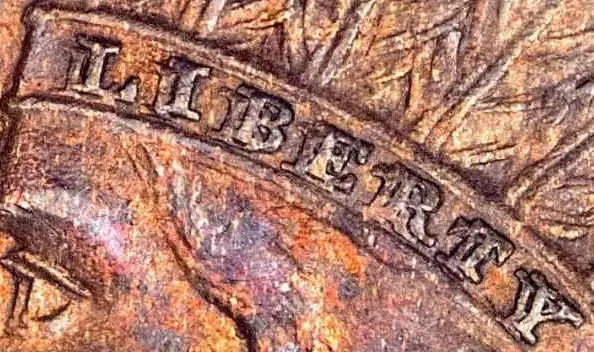
Types of Rare and Valuable Indian Head Cents
The 1873 Indian Head one-cent piece comes in two types, depending on the opening of the ‘3’ in the year ‘1873’ embossment. In the photo above, the variety is the open type. On the other hand, the closed variety has a smaller opening between the upper and lower segments of the number ‘3’. Time to get your magnifying glass out!

Both varieties are valuable cents. But we coin enthusiasts are always talking about the Doubled Liberty. Otherwise, its maximum price is around $300.
What are pennies made of? Copper, zinc… Its history is full of variations and ‘secrets’ that offer excellent opportunities for great profits! More info about Indian Head Penny Prices.
4. 1914 D Lincoln Wheat

These tiny pieces rank third in this select group, and by its condition of rare coins struck at the Denver Mint (hence the D) can fetch prices of up to $5,500.
5. 1922 D Lincoln Wheat Penny
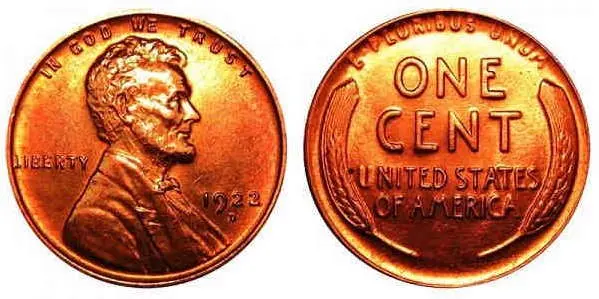
Two versions of this valuable Lincoln penny, named for the crop depicted on its reverse, and coinage by the United States Mint at Denver, are known to exist – without the ‘D’ and with the weak ‘D’. Given the difficulty of verifying them, it should be the job of an expert to authenticate it. The most coveted is the one without the D, which could be worth several thousand dollars – $33,000. For the rest, the standard price is $175.
6. 1877 Indian Head Penny
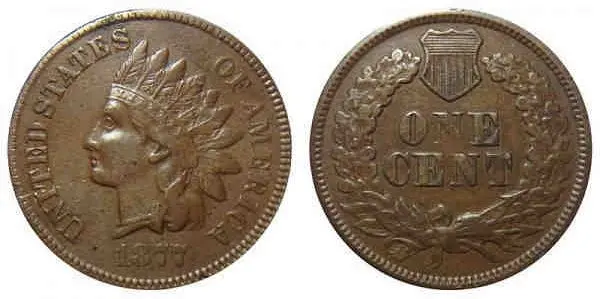
Less than one million of these coins were issued in 1877. If we compare it with the following issue numbers of 7.9 and 5.9 million, we can understand why they are so expensive without having to search for hidden rarities. It reaches values of an enormous $3200.
7. 1926 Wheat Cent with no mint mark

According to the official Red Book, this Lincoln cent coinage by the Philadelphia mint is a treasure for coin collections, as it can be worth nearly $3,000.
How to grade your Lincoln Penny
To graduate a piece we need both the grade and level, an alphanumeric grade.
Attending its characteristics we have the following levels:
Note: In this example the type of currency is not important, the main thing is that you learn to recognize the relevant factors of each grade of the scale. Then you will be able to grade all types of currencies!
Circulated states of conservation
Poor, poor (P-1): Few currency details. Just to be able to identify it’s type and date, sometimes not even that. Usually, they are excessively circulated and quite mistreated specimens with a flat design. The edges are flat and hardly distinguishable from the fields.
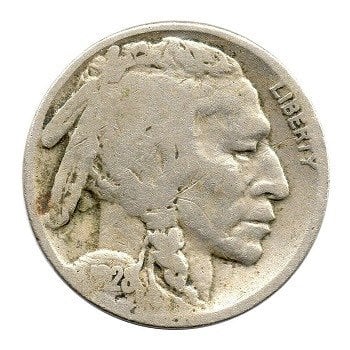
Fair, regular (FR-2): Copies with enough details for identification of type, date, mint, etc. but not as badly treated as the previous one. The edges start to be distinguished from the coin field, and some contours of the coin images.
About Good, almost good (AG-3): Most of the design is appreciated. You can read several letters and/or digits of the date.
Good, good (G-4): High wear, little visibility of details but letters and digits are almost clearly visible. The overall design of the coin is appreciated.
Good, good (G-6): The edges are clear and not smooth. Letters and digits are better appreciated.
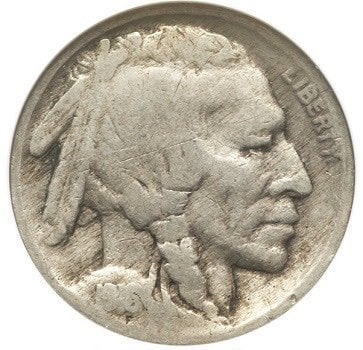
Very Good, very good (VG-8): They are still exemplary with important wear but the main characteristics can be appreciated, although very smoothly.
Very Good, very good (VG-10): All but smooth design is appreciated. As a general rule, to be accepted to enter this category, Barber, Liberty Nickels and Indian Head Cents must have at least 3 letters of the word LIBERTY visible.
Fine, good (F-12): Important and uniform wear, but the most important elements can be seen with some clarity. Letters of the legends are not joined with the edge.
Fine, either (F-15): Similar to above and some letters or digits are clear. For Barber, Liberty Nickels and Indian Head Cents coins the 7 letters of the word LIBERTY should be visible even if some are ill-defined.
Very Fine, Very Good/Very Fine (VF-20): More moderate wear with some sharper detail. The legends, or part of them, can be easily seen and are more separated from the edge.
Very Fine, very good/very fine (VF-25): Almost complete details with very smooth design areas.
Very Fine, very good/very fine (VF-30): The design areas are smooth.
Very Fine, Very Good/Very Fine (VF-35): Full details but the highest points of the design are worn.
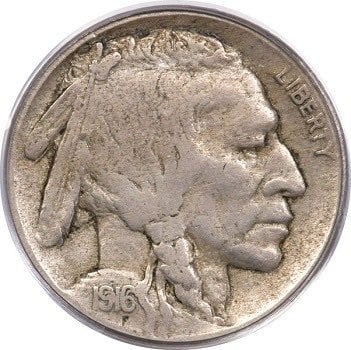
Extremely Fine, extremely good (EF-40): Slight wear and tear at the highest points. The finest and smallest details are already visible. Legends re-created.
Extremely Fine, extremely good (EF-45): Wear and tear on the highest points is minimal.
About Uncirculated (AU-50): The part is slightly worn by more than 50%. The highest points of the design have a slight softness.
About Uncirculated (AU-53): Similar to the above, but the raised areas of the design have minimal smoothness.
About Uncirculated (AU-55): Wear is present on less than 50% of the part.
About Uncirculated (AU-58): Wear only at high points in the design. Coins in this grade are so good that they are often confused with MS grades (the higher grades we will see below).
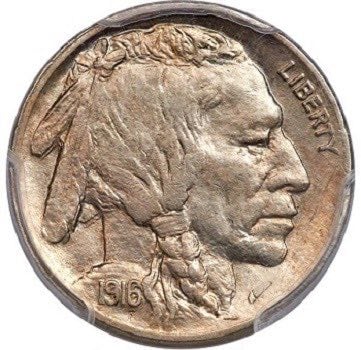
Uncirculated states of conservation
For uncirculated coins, there are 11 other grades that are usually called Mint State (MS) although they are also assigned denominations such as Uncirculated (Unc.) or Brilliant Uncirculated (BU).
We refer in these grades to coins that show no signs of having circulated and are well minted but may have marks or scratches from handling or storage, discoloration in glosses, or the odd tap. In such cases, the numerical grades within MS are used.
Uncirculated (MS-60): No wear on elevated areas. Coining was weak. Many abrasions, scratches or marks. Faint gloss.
Uncirculated (MS-61): Basically differs from the previous one in that the dashes, marks, etc. are smaller.
Uncirculated (MS-62): Medium coinage, less slack than previous grades Large abrasions.
Select Uncirculated (MS-63): Abrasions less than the previous grade. Stripes of various sizes. Slight shine.
Choice Uncirculated (MS-64): Medium coinage or higher. Marks, stripes and other minor flaws.
Gem Uncirculated (MS-65): Good coinage with small marks or stripes. Original high gloss.
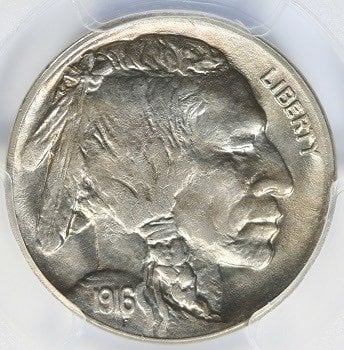
Gem Uncirculated (MS-66): Very good coinage with few stripes/marks.
Superb Gem Uncirculated (MS-67): Strong coinage with some imperfections.
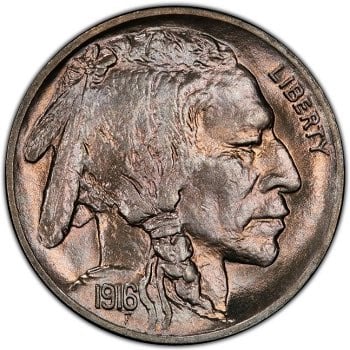
Superb Gem Uncirculated (MS-68): Strong coinage with tiny imperfections not visible to the naked eye. Perfect original shine. High visual appeal.
Superb Gem Uncirculated (MS-69): Perfectly coined with imperceptible imperfections, needing to be enlarged to see them. Perfect original brightness.
Perfect Uncirculated (MS-70): Perfectly minted, centered, perfectly plated coin. No imperfections even at x5 magnification. Complete and original brilliance.
Although they are not strictly proper to this article, yet since they appear quite assiduously in the grading of coins, we think it is important to clarify what the Proof denomination means.
The term Proof (PR or PF) is not a proper grade although it can be misleading. Rather, it refers to the form and method by which a coin was struck. It is also used to grade Proof pieces the 11 levels of MS although with its own acronym, ie PR-60 (=MS60), PR-61 (=MS61), PR-62 (=MS62), etc. based on their conservation, appearance and brightness.
Both PCGS and NGC use the “+” symbol for the graduations of some parts and levels.
PCGS assigns the “+” only for the 30% of the parts with the greatest visual appeal for grades XF-45 to MS-68. NGC uses this “+” (plus) for top coins within each grade so that they look closer to the next higher grade, and also limits it to grades from XF-45 to MS-68.
In addition, NGC also uses a star “*” for those specimens with extraordinary visual appearance (hue, brightness, etc) within the same grade of single color or multicolored but never with dark brown areas that are almost black.
Bonus: Beware of fraud
How do I know if my coins are made of steel?
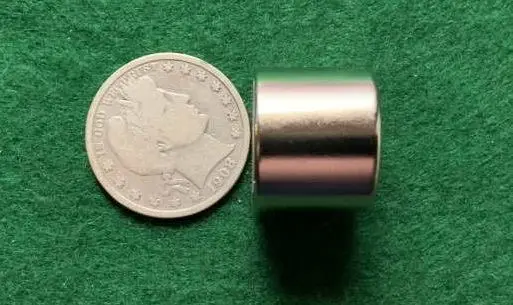
This type of coin are one of the favorite pieces for counterfeiters. That is why there are many supposed cents from 1943 made of this material that are just fakes. They are actually copper coins with a zinc coating, made specifically to sell them as genuine Wheat piece made of this metal.
How do you know if your valuable cents are fake?
Simple – with a magnet, you can tell if the coin is copper or steel-plated copper. If it sticks to the magnet it will be legit, otherwise, it is not.
References and sources
- Heritage auctions
- NGC
- The Official Red book: A Guide Book of United States Coins.
- Wikipedia, «List of most expensive coins, https://en.wikipedia.org/wiki/List_of_most_expensive_coins»
- Yahoo Finance, «9 Rare American Coins That Are Worth a Lot of Money, https://finance.yahoo.com/news/9-rare-american-coins-worth-120155095.html»

